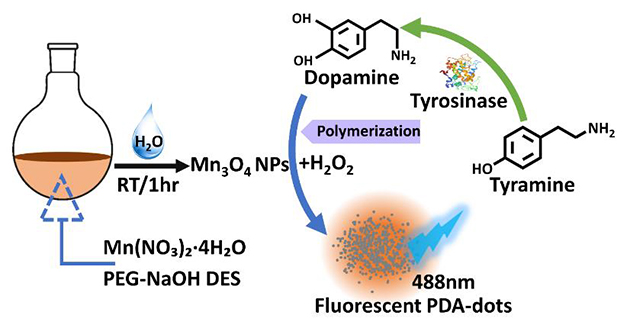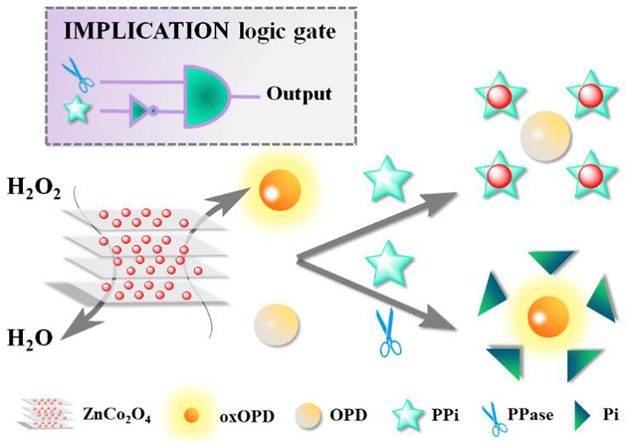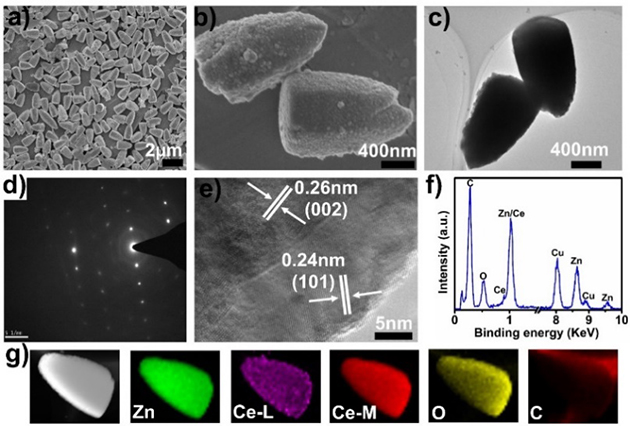Deep eutectic solvents (DESs) are an emerging class of solvents usually formed by hydrogen bond donors (HBDs) and hydrogen bond acceptors (HBAs) at a fixed molar ratio. DESs play a key role in many fields due to their unique characteristics: facile preparation, biodegradability, low-cost, and being environmentally friendly.
The group at the Lanzhou Institute of Chemical Physics, Chinese Academy of Sciences, responsible for chiral separation and micro/nano analysis, has carried out a series of research work on the preparation and application of novel DESs-mediated nanomaterials. Researchers have designed and synthesized a new series of DESs, in which strong hydroxides, including LiOH, NaOH, and KOH are used as HBAs, while EG and low-molecular PEG including PEG-200, PFG-400, and PEG-600 serve as the HBDs. They found evidence that these DESs can be used as reactants, templates and solvents for highly-efficient green preparation of transition metal oxide nanomaterials. The related research findings were published in Chinese Chemical Letters( 2020, 31, 1584) and authorized national invention patent of China( Patent Number:ZL 201910135799.8).
Based on the above principle, the researchers synthesized Cu2(OH)3NO3 nanosheets at room temperature by adding Cu(NO3)2 to these DESs. The material shows oxidase-like and peroxidase-like activities, and can be used for colorimetric analysis of biothiols. This study was published in Analytical and Bioanlytical Chemistry(2020, 412, 4629). Subsequently, the researchers prepared Mn3O4 nanoparticles (Mn3O4 NPs). Since Mn3O4 NPs can decompose H2O2 into hydroxyl radicals, dopamine eventually generates polydopamine dots with blue-emitting fluorescence when exposed to the action of hydroxyl radicals, thus enabling fluorescence detection of dopamine. Meanwhile, tyrosinase can catalyze tyrosine to dopamine, which means that this strategy can also be used for selective detection of tyrosinase (Fig. 1). The related research findings were published in ACS Applied Nano Materials(2021, 4, 2820) and applied for national invention patent of China (Patent Application Number: CN 202110174492.6).

Fig. 1 Preparation of Mn3O4 NPs and fluorescence detection of dopamine and tyrosinase
In addition, the researchers synthesized CdCo2O4 nanosheets by adding Cd(NO3)2 and Co(NO3)2 to DESs. The materials exhibited triple-enzyme mimetic activities including oxidase-like, peroxidase-like, and catalase-like activities and can be successfully used for highly sensitive detection of glucose in blood. The related research findings were published in Microchimica Acta(2020, 187, 314). On this basis, ZnCo2O4 nanosheets with peroxidase-like activity were prepared for colorimetric detection of pyrophosphoric acid (PPi) and pyrophosphatase (Ppase), and the IMPLICATION logic gate was ingeniously constructed (Fig. 1). This study was published in Talanta(2021, 222, 121680). This paper was selected as a highly cited paper by Web of Science in 2021.

Fig. 2 Colorimetric sensing of PPi and PPase via regulating the peroxidase-like activity of ZnCo2O4 nanosheets.
Recently, the research group synthesized bullet-shaped Ce-ZnO (Fig. 3) and sheet-like Zn5(OH)8(NO3)2·2H2O materials using such DESs at different temperatures. Interestingly, Ce-ZnO holds a catalytic activity towards polymerization of dopamine to initially pink color quinone derivatives with visible light absorption at 475 nm and finally to blue-emitting polydopamine with highest fluorescence intensity at 480 nm. The catalytic activity of Ce-ZnO can be selectively inhibited by PPi, which leads to a decrease in absorbance intensity or fluorescent emission. Thus, the researchers established a novel fluorometric and colorimetric assay to detect PPi. This study was published in ACS Sustainable Chemistry & Engineering(2021, 9, 15147-15156). Jean Claude Munyemana is the first author of this paper, while Associate Professor CHEN Jia and Professor QIU Hongdeng are corresponding authors.

Fig. 3 Electron microscopy characterization of the prepared Ce-ZnO.
This work was supported by the National Natural Science Foundation of China, Youth Innovation Promotion Association CAS, and the Foundation for Sci & Tech Research Project of Gansu Province.
Contact:
CHEN Jia
Email: jiachen@licp.cas.cn
Lanzhou Institute of Chemical Physics


